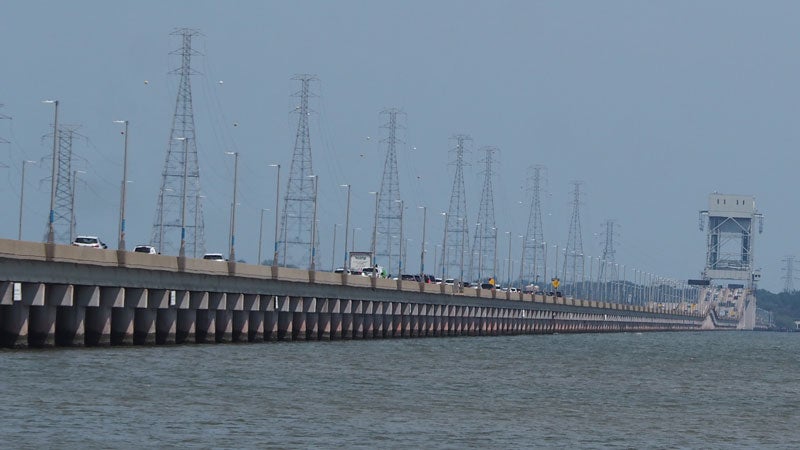Extra $2M for Hardy Elementary water?
Published 7:08 pm Tuesday, October 20, 2020
Supplying a new Hardy Elementary School with drinking water could cost Isle of Wight County upwards of $2 million beyond what the county has already budgeted for the construction.
According to Don Jennings, Isle of Wight’s public utilities director, the county has two options: drill a new well — one equipped with reverse osmosis filtration to remove the excess fluoride in the existing school’s water supply — or buy water from the town of Smithfield, which operates its own reverse osmosis plant.
The Smithfield option, which Jennings is recommending, carries a higher upfront cost — $2.2 million — but the $1.2 million well option would require the county to spend an additional $100,000 a year to operate the reverse osmosis system. Both options include the cost of capping the Days Point, Thomas Park and Tormentors Creek wells, which are also high in fluoride, and transferring those water customers to the new interconnected system.
In September, Isle of Wight’s Board of Supervisors approved borrowing up to $36 million for several capital improvement projects, of which roughly $27 million is budgeted for the new school. But the cost of finding a new water source for Hardy wasn’t factored into those figures during the public hearing on the debt, Assistant County Administrator Don Robertson said.
On Oct. 15, Isle of Wight’s Board of Supervisors voted unanimously to move forward with the Smithfield option. As part of this plan, the town would purchase water from the Western Tidewater Water Authority — an intergovernmental body that includes Isle of Wight County and the city of Suffolk — in an amount roughly equivalent to 200 customers’ usage.
The county negotiated a similar contract with the town in 2018, with Smithfield agreeing to continue selling water to the county for residents of Gatling Pointe, a housing development located just outside the town’s limits. In exchange, the town would buy an equivalent amount of WTWA water from the county within the next one to three years for its customers on the southern end of town near Smithfield High School.
The advantage to both agreements, Jennings said, is keeping Smithfield from exceeding its state groundwater permit while at the same time adding several hundred customers to the county’s system to help offset Isle of Wight’s annually increasing cost of participating in the 2009 Norfolk Water Deal.
The deal — intended to wean Western Tidewater localities off their dependence on groundwater, which Virginia’s Department of Environmental Quality says has reached unsustainable demand — currently allots Isle of Wight 1.5 million gallons per day of surface water from the city of Norfolk.
Of this, the county is only using about 700,000 gallons a day, but per the terms of the deal, is obligated to pay for its full allotment whether it uses that water or not. By the time a new Hardy is built in 2022, Isle of Wight’s allotment will be up to 4 million gallons per day.
According to Town Manager Michael Stallings, Smithfield customers who get switched to county water will still be town customers, and as such, still pay Smithfield’s water rate of $5.68 per 1,000 gallons rather than the county’s, which is nearly double the town’s.
“We will just get the water from a different source,” Stallings said.
However, they may have to continue paying the town’s reverse osmosis treatment fee for water that hasn’t gone through the town’s reverse osmosis plant.
“At some point in time, somebody would ask, ‘Why am I paying an RO fee when the water I’m drinking doesn’t go through an RO plant?’” said Newport District Supervisor William McCarty.
The water supplied to the town via the WTWA will be treated in Suffolk using a different technology known as electrodialysis reversal or EDR. According to the U.S. Environmental Protection Agency, EDR can remove radium and may also be effective in removing uranium, arsenic, nitrate, perchlorate and hardness. The operating costs of such a system, however, “are increased by required acid washes for radionuclides and by disposal costs,” the EPA’s website states.
“At the high school there, Turner Drive, that section of customers, I believe the town would still charge them the RO fee,” Jennings said. “They’re still town customers. That’s a town decision, but I think it would be logistically difficult to separate that.”
In the meantime, Robertson says the water currently in use at the existing Hardy Elementary is within the federal legal limit for fluoride.
“Fluoride concentrations are higher than desirable but are not reaching an unacceptable level,” Robertson said. “Since a new source is required and because elementary age students can be negatively impacted by high fluoride levels, IOW Utilities recommended a treated water source be provided [for the new school].”





